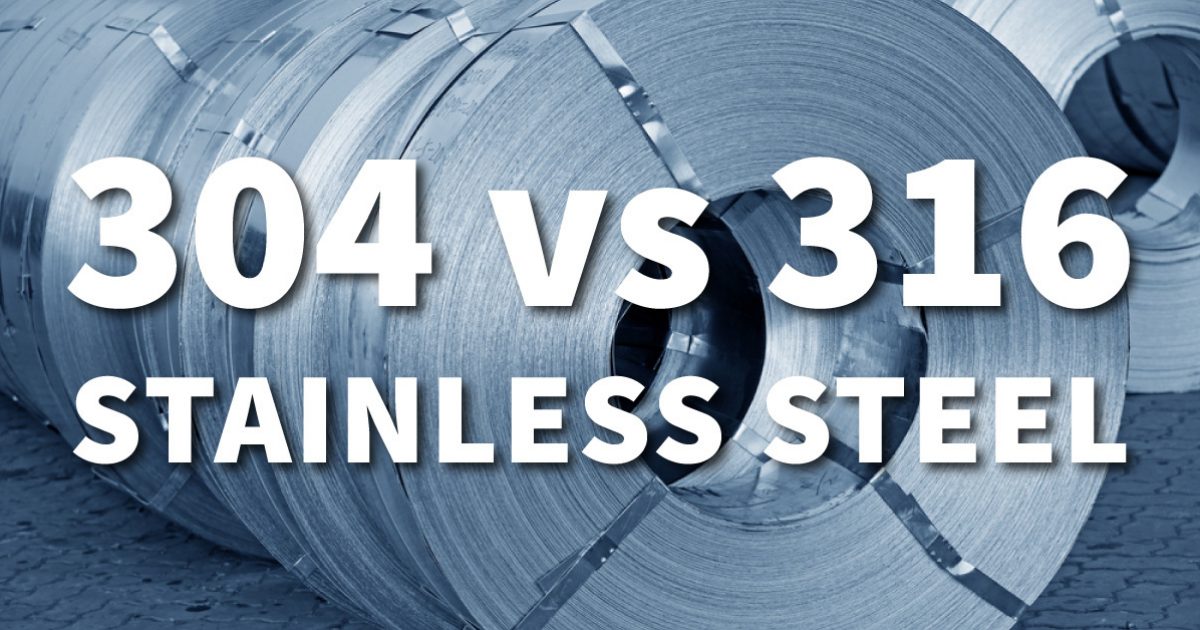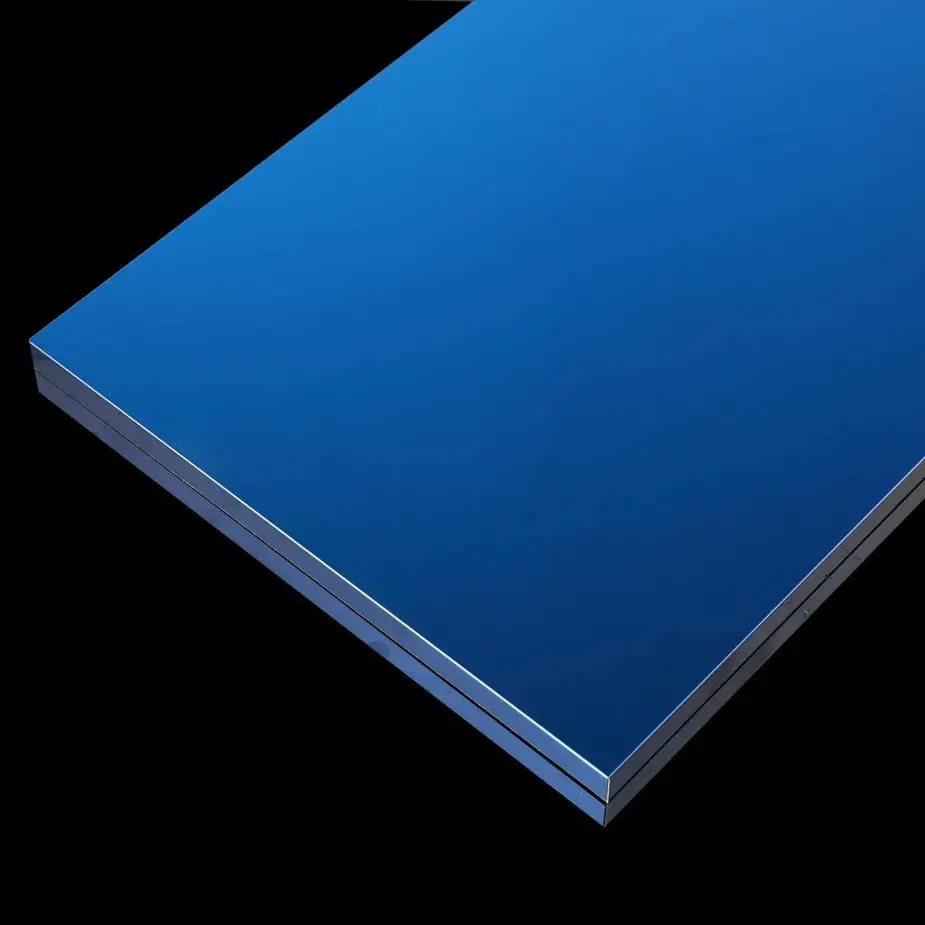Stainless steel is a versatile and durable material used across numerous industries due to its excellent corrosion resistance, strength, and aesthetic appeal. Two of the most common grades of stainless steel are 304 and 316. While these austenitic stainless steels may look identical at first glance, they have distinct properties that make them suitable for different applications. This comprehensive guide will explore the key differences between 304 and 316 stainless steel to help you choose the right grade for your specific needs.
Chemical Composition
The chemical composition is the primary factor that distinguishes 304 from 316 stainless steel and influences their respective properties. Let's compare their elemental makeup:
| Element | 304 Stainless Steel | 316 Stainless Steel |
|---|---|---|
| Carbon | 0.08% max | 0.08% max |
| Chromium | 18-20% | 16-18% |
| Nickel | 8-10.5% | 10-14% |
| Molybdenum | -- | 2-3% |
| Manganese | 2% max | 2% max |
| Silicon | 1% max | 1% max |
| Phosphorus | 0.045% max | 0.045% max |
| Sulfur | 0.03% max | 0.03% max |
The most significant difference is the presence of molybdenum in 316 stainless steel. This addition gives 316 enhanced corrosion resistance, particularly against chlorides and other harsh chemicals. 316 also contains slightly more nickel, while 304 has a higher chromium content.
Corrosion Resistance
Both 304 and 316 stainless steel offer excellent corrosion resistance, but 316 is superior in this regard due to its molybdenum content.
304 Stainless Steel:
- Provides very good resistance to most chemicals, organic compounds, and a wide range of acidic environments
- Suitable for general-purpose applications with moderate corrosion exposure
- May be susceptible to pitting and crevice corrosion in environments with high chloride concentrations
316 Stainless Steel:
- Offers exceptional resistance to chlorides, acids, and industrial solvents
- Highly resistant to pitting and crevice corrosion, even in marine environments
- Better performance in high-temperature corrosive conditions
- Often referred to as "marine grade" stainless steel due to its superior corrosion resistance
The addition of molybdenum in 316 stainless steel significantly enhances its ability to withstand corrosive environments, making it the preferred choice for applications involving exposure to harsh chemicals, saltwater, or high-temperature corrosive conditions.
Mechanical Properties
While both grades offer excellent strength and durability, there are some differences in their mechanical properties:
| Property | 304 Stainless Steel | 316 Stainless Steel |
|---|---|---|
| Tensile Strength | 515-720 MPa | 515-690 MPa |
| Yield Strength | 205 MPa min | 205 MPa min |
| Elongation | 40% min | 40% min |
| Hardness (Brinell) | 201 max | 217 max |
316 stainless steel generally exhibits slightly higher strength and hardness compared to 304, primarily due to its increased nickel content and the presence of molybdenum. However, the differences are relatively minor, and both grades offer excellent mechanical properties suitable for a wide range of applications.
Heat Resistance
Both 304 and 316 stainless steel grades demonstrate good heat resistance, but there are some differences to consider:
304 Stainless Steel:
- Continuous use temperature: up to 870°C (1600°F)
- Intermittent use temperature: up to 925°C (1700°F)
316 Stainless Steel:
- Continuous use temperature: up to 870°C (1600°F)
- Intermittent use temperature: up to 925°C (1700°F)
While the maximum service temperatures are similar, 316 stainless steel generally maintains its strength and corrosion resistance better at elevated temperatures due to its molybdenum content. This makes 316 a preferred choice for high-temperature applications in corrosive environments.
Weldability and Formability
Both 304 and 316 stainless steel grades offer excellent weldability and formability, which contributes to their widespread use in various manufacturing processes.
304 Stainless Steel:
- Excellent weldability using most standard welding techniques
- Highly formable, suitable for bending, stretching, and deep drawing
- May be slightly easier to work with due to its lower nickel content
316 Stainless Steel:
- Very good weldability, though may require slightly different welding parameters than 304
- Excellent formability, suitable for various fabrication methods
- May require more force during forming operations due to its higher strength
Both grades can be easily welded and formed into complex shapes, making them versatile materials for a wide range of manufacturing applications.
Cost Considerations
When comparing 304 and 316 stainless steel, cost is an important factor to consider:
304 Stainless Steel:
- Generally less expensive due to lower nickel content and absence of molybdenum
- More widely available, which can contribute to lower costs
- Often the more economical choice for general-purpose applications
316 Stainless Steel:
- Typically 20-30% more expensive than 304 due to higher nickel content and the addition of molybdenum
- May be less readily available in some forms or sizes
- Higher initial cost can be offset by longer service life in corrosive environments
While 316 stainless steel comes with a higher price tag, its superior corrosion resistance can lead to lower long-term costs in applications where frequent replacement or maintenance would be necessary with 304 grade.
Common Applications
Understanding the typical applications for each grade can help guide your selection process:
304 Stainless Steel Applications:
- Kitchen equipment and appliances
- Food processing equipment
- Chemical containers
- Heat exchangers
- Architectural trim and panels
- Brewing and winemaking equipment
- General-purpose industrial equipment
316 Stainless Steel Applications:
- Marine equipment and boat fittings
- Chemical processing equipment
- Pharmaceutical manufacturing equipment
- Offshore oil and gas equipment
- Surgical instruments and implants
- Pulp and paper manufacturing equipment
- Exterior architectural features in coastal areas
316 stainless steel is often chosen for more demanding environments where its superior corrosion resistance is critical, while 304 is suitable for a wide range of general-purpose applications.
Choosing Between 304 and 316 Stainless Steel
When deciding between 304 and 316 stainless steel, consider the following factors:
-
Environment: If the material will be exposed to harsh chemicals, saltwater, or high-temperature corrosive conditions, 316 is likely the better choice. For less demanding environments, 304 may be sufficient.
-
Budget: 304 is more cost-effective for general-purpose applications, while the higher cost of 316 may be justified in corrosive environments where longevity is crucial.
-
Strength requirements: Both grades offer excellent strength, but 316 may be preferable for applications requiring slightly higher strength and hardness.
-
Regulatory compliance: Some industries, such as pharmaceuticals or food processing, may have specific requirements that favor one grade over the other.
-
Availability: 304 is more widely available in various forms and sizes, which may influence your decision if quick procurement is necessary.
-
Welding and fabrication: Both grades are easily welded and formed, but 304 may be slightly easier to work with in some cases.
-
Aesthetics: While both grades have a similar appearance, 316 may maintain its luster better in harsh environments due to its superior corrosion resistance.
Conclusion
Both 304 and 316 stainless steel are excellent materials with a wide range of applications. The choice between them ultimately depends on the specific requirements of your project. 304 stainless steel is a versatile and cost-effective option suitable for many general-purpose applications, while 316 stainless steel offers superior corrosion resistance and slightly higher strength, making it ideal for more demanding environments.
By carefully considering factors such as the operating environment, budget constraints, and performance requirements, you can select the stainless steel grade that best meets your needs. In some cases, the higher initial cost of 316 stainless steel may be justified by its longer service life and reduced maintenance requirements in corrosive environments.
Remember that while this guide provides a comprehensive overview of the differences between 304 and 316 stainless steel, consulting with a materials expert or engineer is always recommended for critical applications to ensure the best possible material selection.
FAQs About 304 vs 316 Stainless Steel
Q: Can 304 stainless steel be used in marine environments? A: While 304 stainless steel offers good corrosion resistance, it is not recommended for marine environments due to its susceptibility to pitting corrosion from chlorides. 316 stainless steel is a better choice for marine applications.
Q: Is 316 stainless steel magnetic? A: Like 304, 316 stainless steel is generally non-magnetic in its annealed state. However, both grades can become slightly magnetic when cold-worked.
Q: Which grade is better for food processing equipment? A: Both 304 and 316 stainless steel are suitable for food processing equipment. 304 is commonly used due to its lower cost and good corrosion resistance. However, 316 may be preferred in applications involving acidic foods or where chlorine-based sanitizers are frequently used.
Q: Can 304 and 316 stainless steel be welded together? A: Yes, 304 and 316 stainless steel can be welded together. However, the weld area may have slightly different properties than either base metal, and care should be taken to use appropriate welding techniques and filler materials.
Q: Is 316 stainless steel always the best choice for outdoor applications? A: While 316 stainless steel offers superior corrosion resistance, it may not always be necessary for all outdoor applications. In mild environments away from coastal areas, 304 stainless steel can perform well and may be a more cost-effective choice.
Q: How can I distinguish between 304 and 316 stainless steel visually? A: It is virtually impossible to distinguish between 304 and 316 stainless steel by visual inspection alone. Specialized testing methods, such as X-ray fluorescence (XRF) analysis or chemical testing, are required to definitively identify the grade.
By understanding the key differences between 304 and 316 stainless steel, you can make an informed decision when selecting the appropriate grade for your specific application. Whether you prioritize cost-effectiveness, corrosion resistance, or strength, choosing the right stainless steel grade will ensure optimal performance and longevity for your project.


